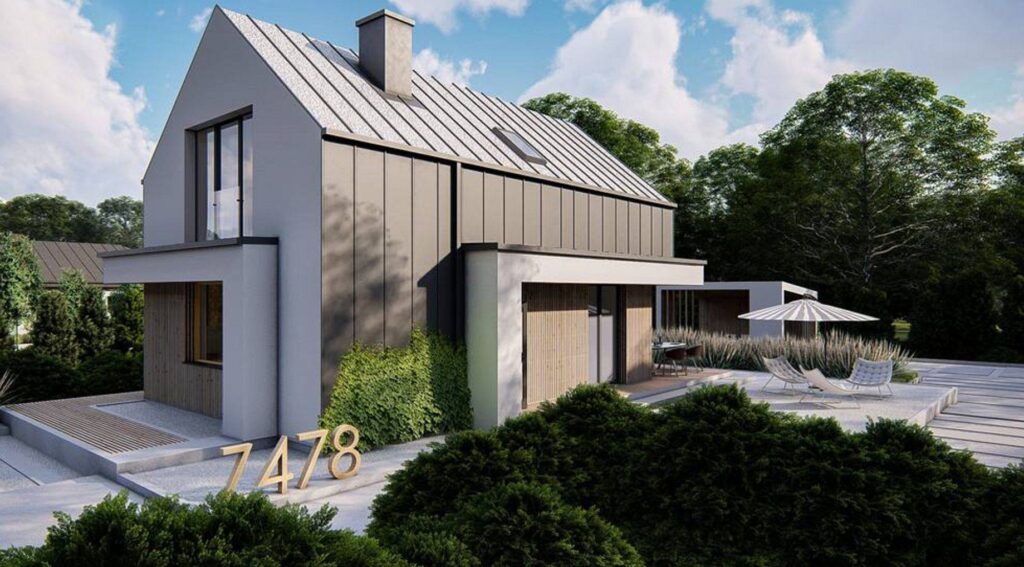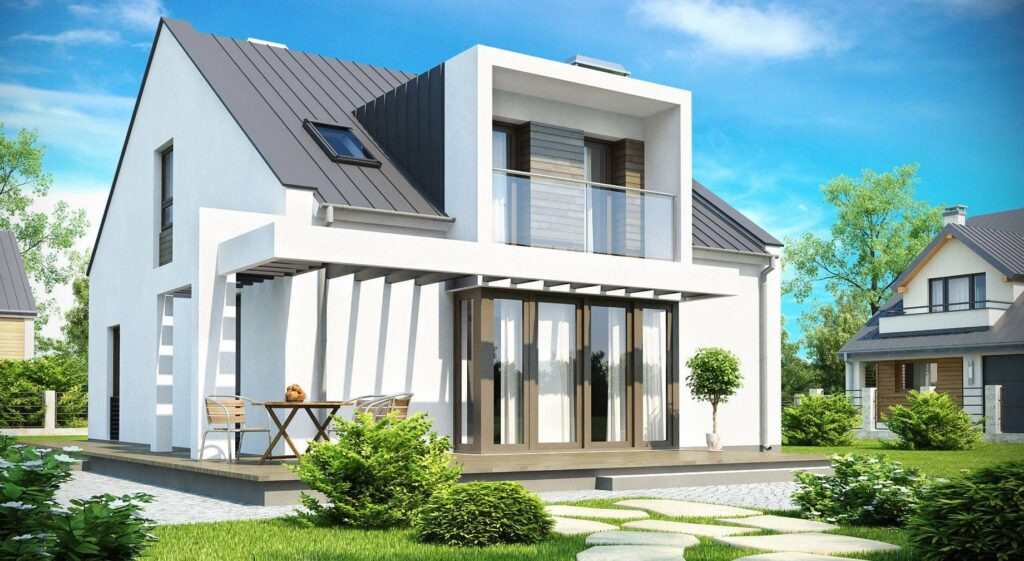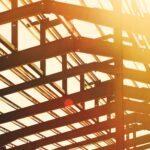The eaves overhang is one of the key elements of the roof structure. This component extends beyond the contours of the building, giving it a distinctive appearance. It would seem that a roof without overhangs is impossible, but in practice, buildings with this type of roof have not only been successfully erected for a long time but are also becoming increasingly popular. Let’s look at the advantages and disadvantages of a roof without overhangs to find out if this solution is right for you.
| Barnhouse-style cottages (a house without eaves) are typical and popular in regions with strong winds and frequent rainfall, such as coastal locations and islands in countries such as the UK, Denmark, Norway, and Sweden. In conditions where a stormy wind constantly blows from the sea, raindrops fly almost horizontally, which makes the overhangs on the roof almost useless, since the walls of the house still get wet. |
| Extreme weather conditions require special requirements for the selection of materials for the roof and facade of such houses. In particular, moisture-resistant material is often used, such as a profiled metal sheet or rebate with a protective coating that prevents metal corrosion. In such cases, a drainage system is often not installed, as it becomes redundant and unnecessary. |

Architectural features and design of a roof without overhangs
A home without overhangs can be built without a traditional gutter system, which fits perfectly into its architectural style. In this option, a solution is often used in which the roof covering continuously extends into the vertical walls of the building.
This approach raises the question of ventilation of the under-roof space and roofing technology. Ventilation is realized using a conventional ventilated facade, which is simultaneously combined with the under-roof space.
Ventilation is carried out as follows: air is taken from the base of the building, passes up the entire length of the walls, then rises under the roofing and is drawn out at its highest point (at the ridge).

To do this, several conditions must be met:
- Ensure high-quality and effective thermal insulation of walls.
- It is necessary to install a reliable vapor barrier inside the premises.
- A super-diffusion, vapor-permeable, moisture- and windproof membrane should be laid over the insulation.
- These conditions allow for effective air circulation, promoting ventilation of the roof space and maintaining a healthy environment inside the house.
- Experience shows that houses with roofs without overhangs are perfectly suited to our climate with long winters, frequent temperature changes through 0, significant snow loads, and prolonged rains, provided:
- Careful calculation and design.
- Use of high-quality building materials.
- Correct installation.
The absence of eaves overhangs requires a careful approach to the selection of building materials for the facade, roofing, as well as components of the under-roof “pie”. It is necessary to pay due attention to the development of the design of the structure itself.
It is strongly not recommended to create a roof without an overhang for ordinary standard houses. This architectural approach looks beneficial only on cottages that have a certain design, shape, and roof slope that correspond to this style.
That is why cottages with such a roof feature are rare due to increased requirements for the quality of construction work, the materials used, and the need to use expensive technical solutions, for example, hidden drainage systems.
However, with the right approach, it is not necessary to hide the drainage system, as it can become a stylish element that complements the overall architectural appearance of the cottage. The main thing, in this case, is to carefully work out the design of the roof-gutter unit and choose the shape of the drainage system so that it harmoniously fits into the overall design of the house and its decoration.

Advantages of Barnhouse-style
This style has several advantages:
- The simplicity and minimalism of the Barnhouse style eliminates the need to develop complex designs, which is especially attractive for lovers of laconic solutions.
- The combination of a strict look with a modern style ensures that the interior is uncomplicated and comfortable, which suits the tastes of many.
- The design does not require a reinforced foundation, which reduces the overall cost of construction.
- Large window openings allow maximum use of natural light inside the house.
- The simplicity of the style allows the barnhouse to fit perfectly into various landscapes and conditions – from rural areas to urban cottage villages.
- The ability to experiment with different materials gives architects creative freedom and helps create optimal living spaces.
- A well-built barnhouse has high protection from cold and moisture.
Barnhouse-style houses attract modern people who value space and comfort as the main qualities of their homes. Many are attracted by the opportunity to create an interior according to their needs, as well as the abundance of light and free space. This style appeals to people who are not accustomed to restrictions and have their special understanding of style and comfort.

Disadvantages of Barnhouse-style
When choosing a Barn house or a house without eaves for the roof, you should be prepared for additional costs. Such houses cannot simply be covered with siding, clapboard, or facing brick, as is done with ordinary houses. All elements must be harmoniously combined, creating a unified and aesthetic picture. Moreover, builders involved in such projects must have advanced qualifications.
A hidden system for installing a drainage system on a roof without overhangs requires an integrated approach, calculations, and the work of a designer. This increases the cost of building a home due to the need for specialized materials and skills.
POPULAR QUESTIONS:
What are the typical features of barnhouse-style homes? Barnhouses typically have a simple, symmetrical shape, a steeply pitched roof with no overhangs, and an open floor plan inside. One of the key features of the Barnhouse style is the use of “natural” materials for the facades.
What are the typical color schemes used in barnhouse-style homes? Typical color schemes include neutral shades such as white, gray, and brown, as well as warm, earthy tones.
What types of windows are commonly used in barnhouse-style homes? Typical barnhouse-style windows are large, rectangular windows with wood or metal frames.



